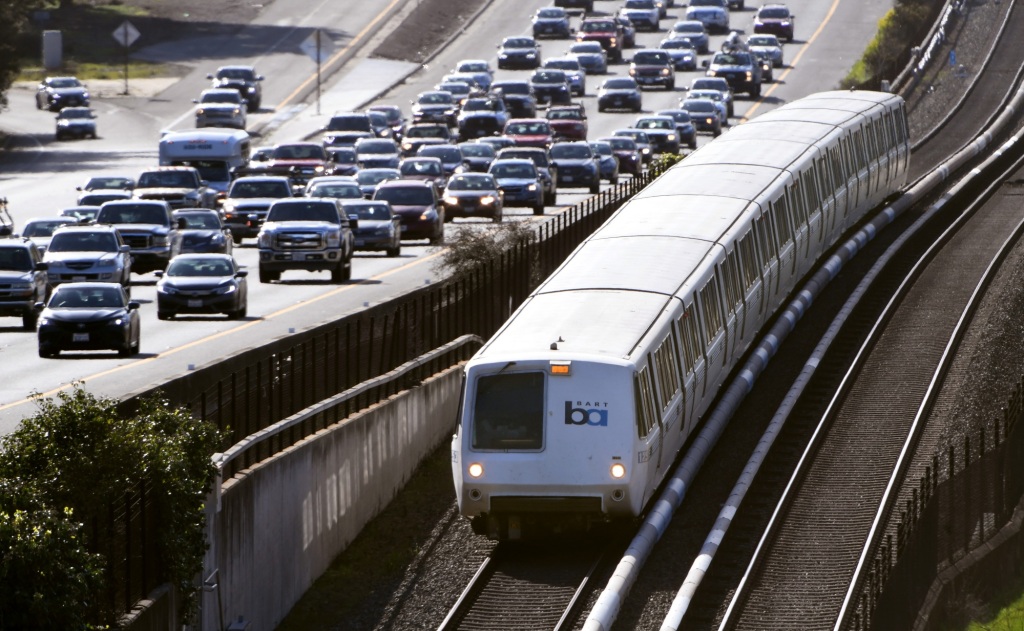Even as other states surpass their pre-pandemic job levels, the Bay Area and California have recuperated from coronavirus-linked business shutdowns and closures at a mediocre pace.
The feeble rebound means a full recovery from COVID-spawned job losses remains months away, and has prompted some experts to warn that the Golden State and Silicon Valley aren’t guaranteed to always rule the economic roost.
“California and the Bay Area can no longer take their economic and job growth engines for granted,” said Scott Anderson, chief economist with Bank of the West.
The state has recovered 89.3% of the jobs it lost during March 2020 and April 2020, the first two months of the business lockdowns, placing it 25th out of 50 states, this news organization’s analysis of federal reports shows. The Bay Area has fared even worse — regaining just 77.8% of its vanished employment. The nine-county region, were it a state, would be ranked No. 43.
“The job growth engine has sputtered,” Anderson said.
One reason for the relatively sluggish performance is that California, and the Bay Area in particular, instituted some of the nation’s most restrictive measures to combat the coronavirus. Public health officials credit those measures with saving the lives of hundreds of people who might have otherwise succumbed to the virus.
“The Bay Area was far more cautious and conservative than other parts of the country,” said Russell Hancock, president of Joint Venture Silicon Valley, a San Jose-based think tank. “Other places sort of closed down but we went whole hog, shuttering the entire in-person economy.”
But local pandemic measures also caused economic pain — and allowed states that weren’t as cautious to surge ahead.
“Jobs have been far slower to recover in the Bay Area than much of the rest of California and fallen well below the best pace of the most vibrant areas of the country,” Anderson said. “This is a stark change from the post-Great Recession recovery when the Bay Area frequently led the state and nation’s economic expansion.”
California, the Bay Area, Santa Clara County, the East Bay and the San Francisco-San Mateo region lag well behind the nationwide recovery pace of 92.8%, the analysis of figures posted by the U.S. Bureau of Labor Statistics shows.
And while California has yet to even reach the 90% recovery milestone, 13 of the nation’s states have now regained more jobs than they lost during the first two months of the business shutdowns.
Texas, Florida, Arizona, Colorado, Utah, Idaho, North Carolina, South Carolina, Montana, Georgia, Tennessee, Arkansas and Indiana now report more jobs than they had before the pandemic hit. Making matters worse for California, several of those states are California’s economic rivals.
Some critics of California’s business climate, whose features they say include red tape and a byzantine regulatory structure, point to recent high-profile corporate departures such as Hewlett Packard Enterprise, Oracle, Tesla and Palantir. Yet while administrative offices decamped, the vast majority of these companies’ Bay Area jobs remain in this region.
California’s rebound is also weaker than the recoveries of other major economic foes such as Nevada and Washington state, which both have regained more than 90% of their lost employment.
Pandemic shutdowns aren’t entirely to blame for California’s sluggish recovery.
“There’s now no question that the difficulty California and the Bay Area are experiencing with recovery is structural in nature,” said Patrick Kallerman, vice president of research for the Bay Area Council Economic Institute. “A very high propensity to work from home, struggling retail and hospitality sectors, and a general regional malaise all seem to be factors.”
At the current pace of average job gains, the Bay Area now remains about seven months away from getting back all of its lost jobs, Santa Clara County and the San Francisco-San Mateo region are both roughly five months away from full recovery, and California is more than three months away. Meanwhile, the United States is less than three months from recovery.
One reason the Bay Area remains further behind is that the nine-county region was hammered by far worse job losses during the first year of the coronavirus outbreak.
Over the one-year period that ended in February 2021 — roughly covering the first year of the business shutdowns — the Bay Area lost 9.6% of its jobs, California lost 8.2% and the United States lost 5.8%.
In contrast, over the one-year period ending in February 2022, the Bay Area job market grew 6.2% and California job totals rose 6.8%. By comparison, the United States was up 4.7%.
California and the Bay Area are still considered to be major job engines of the overall U.S. economy. Tech companies have fared well and continued to add jobs despite coronavirus-linked afflictions. But the economic woes unleashed by the deadly bug have devastated the hotel, restaurant and travel sectors.
And in the wake of the pandemic, the Bay Area and California must address long-term issues such as housing affordability, the cost of living and business climate problems or they will continue to be vulnerable to losing workers and corporate job hubs to other states.
“People and businesses will continue to vote with their feet,” said Anderson, the the Bank of the West economist, “and the region’s economy will not be able to shake its new mediocre label.”










